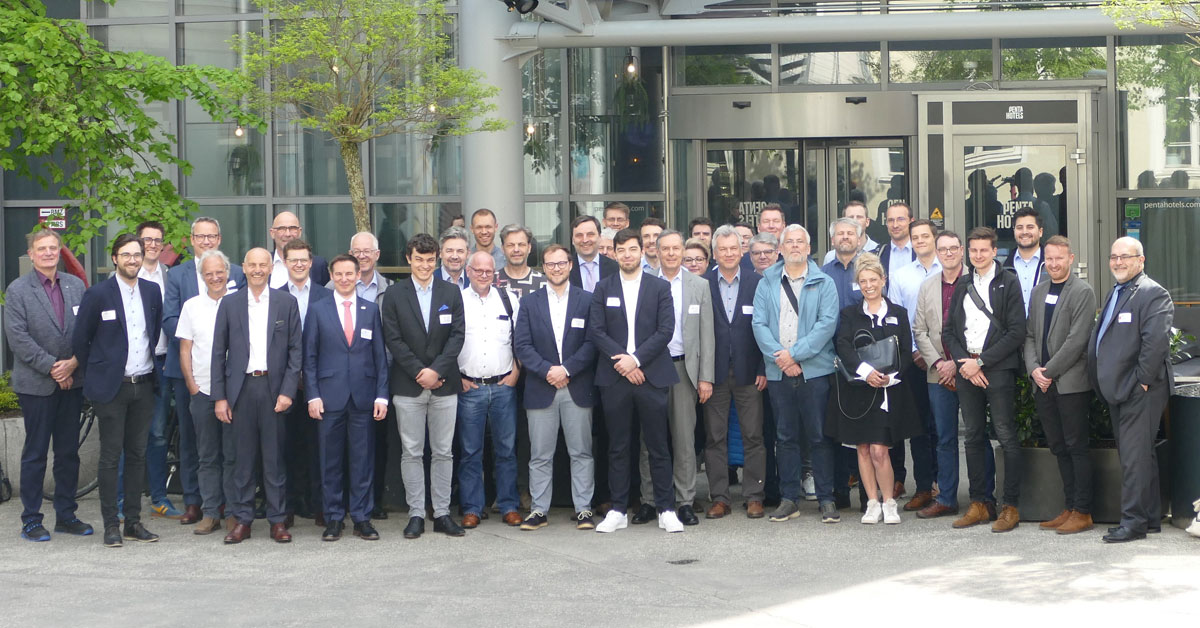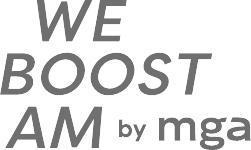Spending two days surrounded by the combined knowledge AM experts, pioneers, and innovators – this is a dream come true for us at MGA. And it’s exactly what we had the privilege of doing during the past two days at the MGA Annual Meeting and Women in AM Summit 2023!
We have had the privilege of exploring a wide spectrum of diverse AM applications and captivating AM journeys. The possibilities within this field are limitless, and we’re excited to witness the incredible innovations that will shape the future. We are looking back at networking opportunities, workshops, panel discussions, insightful talks, and, of course, the 3D evening event with 3D printed food. Trying to pick the highlights from this experience is nearly impossible, but we’ll do our best to capture some of the magic for you.
The Women in AM Summit
We started our 4-events-in-two-days marathon with our women-only “Women in AM Summit”. The aim of this event is to bring together female role models and AM experts on stage and an all-female audience to inspire the open exchange in a relaxed setting – something that is nearly impossible when being part of a larger event in an industry of only 15% female quota. Our participants are invited to learn from each other – pioneers mentoring newcomers – while at the same time connecting the female representatives of our industry as well as hearing updates from that industry on for example AM in construction, AM ceramics, dental AM and much more.
A special thank you to our speakers and especially Małgorzata Kielak, the founder of Find Your Wine Match, who hosted a wonderful ice-breaker event in the afternoon and our external source of inspiration, Sven Krause, who coached our guests on the relevance of Feelgood Management in retaining employees.
The Yearly Gathering of the Working Group Materials
The face-to-face meeting of our Working Group Materials – MGA’s largest Working Group – included pitches from the Focus Groups WAAM and Technical Data Sheets as well as the Medical Focus Group Analysis and Processing. The members of the group came together not only to hear about current projects, but also to define the next steps.
One thing that we would like to highlight at this point: our Materials Working Group led at that point by Dr.-Ing. Tina Schlingmann received the prize for the best paper for their article on the results of their Round Robin test. The award was well-deserved, showcasing the outstanding research and contributions from the MGA members.
The General Assembly
As an association, we are happy to host all our 142 members for the General Assembly, where our Executive Board, Nicole Friedrich, Johannes Emmelheinz, Prof Dr-Ing Claus Emmelmann and Prof Dr Florian Thieringer, recaps the past fiscal year and our treasurer Carmen Schmieder presents the annual fiscal report – Carmen was also re-elected as treasurer by the General Assembly.
This year, our Executive Board honoured our former members of the advisory board, Klaus Roeser and Steffen Kuhn, for their exceptional dedication and service with an honorary membership.
The Executive Board also honoured the support from and expertise of our advisory board (Oliver Cynamon, Sonja Rasch, Andreas Leupold, Bernhard Winkler) and the extended board (Torsten Wehrkamp, Olaf Steinmeier) and we would like to take this opportunity to also thank them for their continuous work.
We also welcomed two new members to our Advisory Board: Dominic Duda (Takeda) and Marc Fette (CTC – An Airbus company), we look forward to working with you.
The 3D Evening Event
Where can you try 3D printed Pasta, Steak and Salmon?! Exactly, at our 3D evening event that we hosted outdoors in the Marienpark in Berlin (thanks to Investa for giving us the space to host our members and friends).
The weather was more than perfect and most of our guests spend the evening enjoying the last warm summer night outside, networking and enjoying the food from our BBQ station and Pasta cook.
The MGA Annual Meeting
September 27 was dedicated to our MGA Annual Meeting where we not only presented the current status of our MGA Mobility and Medical Working Groups but also heard from a diverse selection of panellists and keynote speakers about printing bones, the global AM developments and the latest trends of the AM industry. In our small exhibition our guests were able to have a look at the winning applications of this year’s 3D Pioneers Challenge – thank you for letting us show these great applications for AM. We also hosted our first Workshops during an Annual Meeting: thank you to trinckle 3D for hosting a session on AM software and to Berhard Winkler for moderating the MGA Workshop. At the end of the day, the event was a celebration of innovation, collaboration, and the boundless possibilities of AM.
Thanks to Andrew Littlefield, we learned that every year the US Army allocates $1 billion just for AM topics. We of course had to follow up on that with a specific workshop the following day highlighting what companies must do to benefit from the funds. This workshop laid the groundwork for the Kick-Off of the new Working Group Defence happening on November 9 at the Formnext in Frankfurt (want to join? Contact Sven Fritzsche).
Thank you and see you next year
Thank you to all our speakers and of course our Working Group Leaders for their contributions to the event and our network!
We extend our heartfelt gratitude to our 142 members for being an integral part of our community. Your presence and active participation have enriched this event, contributing to the vibrant atmosphere, and making it a grand success.
The two-day marathon would not have been possible without the great support from our partners (Berlin Partner für Wirtschaft und Technologie GmbH, Siemens Mobility, Protiq Marketplace, Trinckle 3D, SLM, Women in 3D Printing), our amazing technical provider (AV Union Eventtechnik), our great photographer (Philipp von Recklinghausen).
As we continue this journey, let’s maintain the momentum and look forward to more enlightening discussions, networking opportunities, and groundbreaking research in the future. Your contributions make all the difference, and together we shape the future of AM.
Please save the date for next year in your calendars:
October 8 – 9, 2024










